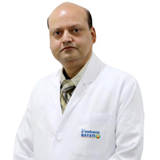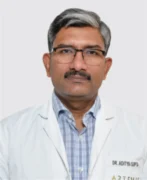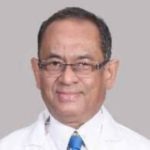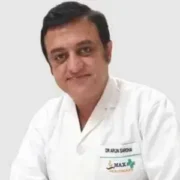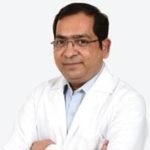Scoliosis surgery costs in India range from $10000 to $ 11500 depending on hospitals and doctors specializing in the treatment.
| Hospital Name | Price Range | Doctor Name |
|---|---|---|
| Artemis | $10000 – $11000 | Dr. Hitesh Garg |
| BLK | $11000 – $12000 | Dr. Puneet Girdhar |
| Sanar | $10000 – $11000 | Dr. Harnaryan Singh |
| KD Hospital | $9000 -$10000 | Dr. Gopal Shah |
| Manipal Hospital | $10500 -$11500 | Dr. Saurabh Verma |
What is Scoliosis?
Scoliosis is a sideways curve in the spine (backbone) that is often diagnosed in adolescent age. It can occur in people with conditions such as Cerebral Palsy and Muscular Dystrophy, most often there is no known cause for this condition. The angle of the curve may be small, large, or somewhere in between. In most cases scoliosis is mild but some curves grow severe as children grow. Also, severe spinal curves can reduce the amount of space within the chest making it difficult for the lungs to function properly. Doctors may use the alphabets “C” and “S” to describe the curve.
What are the signs and symptoms of Scoliosis?
- A visible curve in the back
- Shoulders, hips, or waist that looks uneven
- One side of the rib cage extends forward
- Uneven shoulder blades
Other symptoms related to this can be:
- Back Stiffness
- Lower back pain
- Fatigue due to muscle strain
- Pain and numbness in the legs due to a pinched nerve
What can be the causes of Scoliosis?
Well, the main cause is unknown but some hereditary factors may be involved. Less common types of Scoliosis may be caused by –
- Previous surgery on the chest wall as a baby
- Spinal cord abnormalities
- Injuries or infections of the spine
- Birth defects affecting spinal development
Types of Scoliosis
- Idiopathic Scoliosis – It occurs in as many as 80% of cases where the cause is unknown. There is no exact reason for the curved spine.
- Congenital Scoliosis – This occurs when there is an embryological malformation of one or more vertebrae. Doctors may spot this rare condition when the child is born or may not be able to detect it until the teen years.
- Neuromuscular Scoliosis – This type is associated with cerebral palsy, muscular dystrophy, spina bifida, and spinal cord trauma. It generally progresses more rapidly than idiopathic scoliosis and often requires surgical treatment.
How can Scoliosis be diagnosed?
Scoliosis is generally diagnosed by physical examination, an X-ray, spinal radiograph, CT scan or MRI. The curve is measured by the Cobb Method and is diagnosed in terms of severity by the number of degrees of the curvature. A positive diagnosis of scoliosis is made based on a coronal curvature measured on a posterior-anterior radiograph of greater than 10 degrees. In general, a curve is considered significant if it is greater than 25 to 30 degrees. Curves exceeding 45 to 50 degrees are considered severe and often require more advancing treatment.
Scoliosis treatment in India
- Observation – Somewhere about 90% of idiopathic scoliosis cases are mild and can be kept under observation until the person has reached full skeletal maturity.
- Braces – If the child’s bones are still developing and have moderate scoliosis, the doctor may recommend a brace. Wearing a brace won’t cure scoliosis or reverse the curve, but it prevents the curve from getting more severe. Most braces are worn between 13-16 hours a day depending upon their severity. Its effectiveness increases with the number of hours a day it is worn. They are discontinued when there is no further growth in height.
- Surgery – Severe scoliosis typically progresses with time, so a scoliosis surgery may be required to help straighten the curve and prevent it from getting worse.
Surgical options include:
- Spinal fusion – In this surgery, 2 or more vertebrae (bones in the spine) are fused so that they can’t move independently. Modern surgical instrumentation includes the fusing of bones with metal rods, hooks, screws or wires which hold that part of the spine straight and still while the old and new bone material fuses. An advantage to spinal fusion surgery is that it has long-term safety and efficacy for treating scoliosis. Today’s modern methods tend to fuse fewer vertebrae and maintain more mobility than in past.
- Expanding rod – If the scoliosis is growing rapidly at a young age, surgeons can attach one or two expandable rods along the spine so that it can adjust in length as the child grows. The rods are lengthened every 3 to 6 months either with surgery.
- Vertebral body tethering – It involves placing screws on the outer side of the curve and then pulling them firmly with a cord so the spine straightens. Compared to spinal fusion, fusion less surgery has the possible benefit of retaining more spinal mobility. However, this is a newer approach and long-term data about the risks and benefits are not yet known.
Best scoliosis surgeon in India –
- Dr. Puneet Girdhar – Read more about Dr. Puneet Girdhar
- Dr. Hitesh Garg – Read More about Dr. Hitesh Garg
- Dr. Arun Saroha – Read More about Dr. Arun Saroha
Best hospital for scoliosis surgery in India

